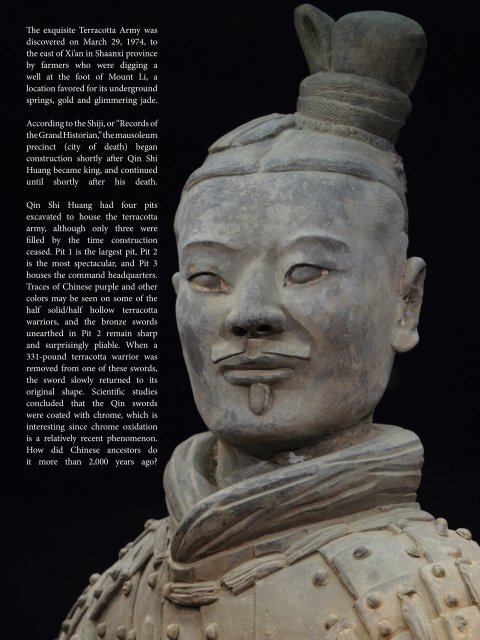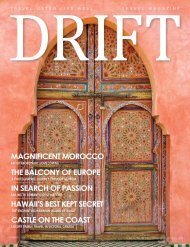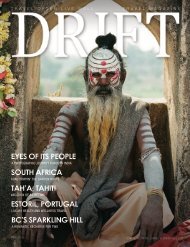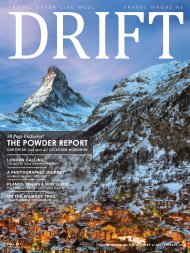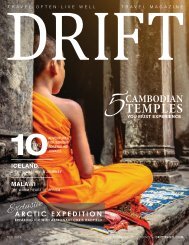DRIFT Winter 2017
In this issue of DRIFT, our nomadic team has been traveling the world to bring you an amazing collection of exclusive destination features. If you’re looking for unknown islands and secret beaches, we’ve found them! If you have always wanted to uncover the secrets of China or learn more about the people of Myanmar, you are going to delight in this issue of DRIFT.
In this issue of DRIFT, our nomadic team has been traveling the world to bring you an amazing collection of exclusive destination features. If you’re looking for unknown islands and secret beaches, we’ve found them! If you have always wanted to uncover the secrets of China or learn more about the people of Myanmar, you are going to delight in this issue of DRIFT.
You also want an ePaper? Increase the reach of your titles
YUMPU automatically turns print PDFs into web optimized ePapers that Google loves.
The exquisite Terracotta Army was<br />
discovered on March 29, 1974, to<br />
the east of Xi’an in Shaanxi province<br />
by farmers who were digging a<br />
well at the foot of Mount Li, a<br />
location favored for its underground<br />
springs, gold and glimmering jade.<br />
According to the Shiji, or “Records of<br />
the Grand Historian,” the mausoleum<br />
precinct (city of death) began<br />
construction shortly after Qin Shi<br />
Huang became king, and continued<br />
until shortly after his death.<br />
Qin Shi Huang had four pits<br />
excavated to house the terracotta<br />
army, although only three were<br />
filled by the time construction<br />
ceased. Pit 1 is the largest pit, Pit 2<br />
is the most spectacular, and Pit 3<br />
houses the command headquarters.<br />
Traces of Chinese purple and other<br />
colors may be seen on some of the<br />
half solid/half hollow terracotta<br />
warriors, and the bronze swords<br />
unearthed in Pit 2 remain sharp<br />
and surprisingly pliable. When a<br />
331-pound terracotta warrior was<br />
removed from one of these swords,<br />
the sword slowly returned to its<br />
original shape. Scientific studies<br />
concluded that the Qin swords<br />
were coated with chrome, which is<br />
interesting since chrome oxidation<br />
is a relatively recent phenomenon.<br />
How did Chinese ancestors do<br />
it more than 2,000 years ago?<br />
62 . <strong>DRIFT</strong>TRAVEL.COM


